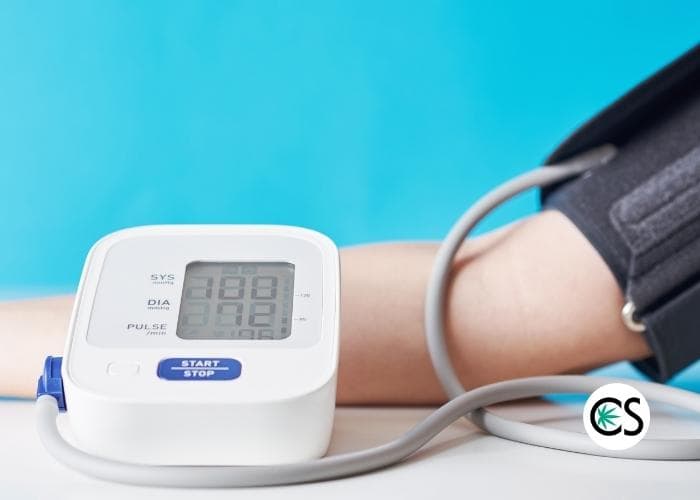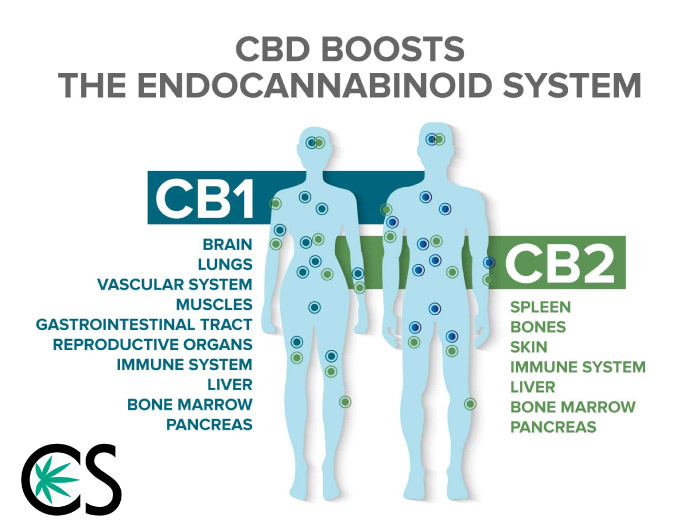HempTalk - Business Blogs and Press Releases
Does CBD Lower Blood Pressure?
Does CBD Lower Blood Pressure?
Does CBD Lower Blood Pressure? There is actually some preliminary evidence that CBD lowers blood pressure. A small study published in the journal JCI Insight in 2017 found that after CBD was administered to participants for a week, their high blood pressure had decreased significantly.1
Hypertension, which affects about one-third of Americans over the age of 20, is a severe illness that can cause stroke, heart attack, kidney failure, or other cardiovascular disorders. People in their mid-sixties and beyond are twice as likely to have it.
It should go without saying that high bp is becoming increasingly common, which will only get worse if people continue to live unhealthy lives filled with stress, processed food, and little exercise.
Cannabidiol (CBD) is a natural chemical derived from the cannabis plant that may help prevent specific causes of high bp, such as poor sleep quality, anxiety, and stress. Using CBD oil for high bp has been shown to improve blood vessel function and lower blood pressure in animals and humans. In addition, some studies have suggested that CBD may have properties that help manage high blood pressure or other issues related to high bp.
What is Hypertension?
Hypertension is a medical term for high blood pressure. Blood is forced through your blood vessels when they are inflated. High bp can cause the walls of your blood vessels, veins, and arteries to be damaged if you expose them to too much force.
When you go to the doctor, you’ll often hear two numbers, such as 120/70, that represent your blood pressure.

The number on top is the systolic pressure, the force developed by the heart as it contracts and pumps blood through the arteries. The second is known as diastolic pressure or relaxation.
A pressure of 140 systolic and 90 systolic pressure is typical in cardiology, considered the boundary between normal and high bp. Therefore, it is essential to keep track of your systolic blood pressure.
Two Kinds of Hypertension
Primary hypertension is the most frequent form. It develops gradually without a known cause but may be connected to genetics, physical changes in the body, or obesity.
Secondary hypertension develops rapidly and maybe more dangerous. It has a variety of causes, including kidney disease, birth heart abnormalities, thyroid problems, drinking alcohol, and certain medications and stimulants.
High blood pressure can cause cardiovascular disease, a heart attack, stroke, aneurysm, heart failure, and other cardiovascular diseases. In addition, type 2 diabetes, stress and anxiety, inflammation, high cholesterol levels, sleeplessness, a salt-rich diet, alcohol, and tobacco use all contribute to the problem.

What is the Accepted Range for a Blood Pressure Reading?
Normal blood pressure for an adult should be below 120/80 mm Hg and above 90/60 mm Hg. Your bp needs to meet these standards:
A normal BP is less than 120 systolic pressure and less than 80 diastolic pressure.
Two different values are given for bp readings. The top figure is the maximum pressure the heart can create while beating (systolic pressure). The bottom is the degree of tension in the arteries between beats (diastolic blood pressure).
Your doctor will most likely prescribe one or more blood pressure medications at this point. Lifestyle choices are just as essential as in the other phases.
What’s Considered Elevated Blood Pressure?
120-139 systolic pressure or 80-89 diastolic pressure is called prehypertension. Meaning that you may develop high BP if you don’t change your lifestyle.
Elevated blood pressure can be treated without the use of medicines.
However, your doctor may advise you on the importance of a healthy lifestyle, such as getting regular exercise and eating a balanced diet.
140 or higher systolic pressure or 90 or higher diastolic pressure is high bp.
Your doctor will most likely prescribe one or more blood pressure medications at this point. Lifestyle choices are just as essential as in the other phases.

Can CBD Help Lower Blood Pressure?
There’s evidence that CBD medicines might help lower blood pressure, but the studies are somewhat mixed.
CBD reduced bp in nine healthy males, according to a 2017 research. In addition, CBD lowered blood pressure in resting and stressed individuals alike. The study also showed a significant reduction in bp response to stress.
CBD significantly reduced stress-induced increases in blood pressure and heart rate, according to a study performed on mice in 2017.
CBD was not found to help lower bp in a 2020 study conducted on rats, which revealed that CBD had an antioxidant effect but no anti-hypertensive effect. However, another 2020 research was more encouraging, indicating that CBD might lower bp in stressed individuals.
Cannabidiol has been shown in research to have beneficial effects on heart disease, but more research is needed to see cannabidiol reduces bp.
In a randomized crossover study, it was determined cannabidiol reduces blood pressure in healthy volunteers.
How Does CBD Oil Reduce Blood Pressure?
There is insufficient evidence to determine this, but CBD is thought to relax the sympathetic nervous system (SNS), reducing blood pressure.
CBD may also impact the vagus nerve, controlling bp, heart rate, and other bodily functions.
A third notion is that CBD’s blood pressure-lowering qualities are only secondary to its anxiolytic and stress-relieving effects. This notion isn’t surprising because anxiety and stress can raise blood pressure.
CBD has been shown in preclinical studies to have several cardiovascular benefits, including a decreased bp response to stress and anxiety.
CBD reduces blood pressure by lowering cortisol levels and widening blood vessels, allowing more blood flow and lower bp.
How CBD interacts with the Endocannabinoid System.
The endocannabinoid system is a natural biological system in the human body that allows cannabinoids to communicate and receive messages that regulate most of your bodily processes. Every day, your body naturally creates cannabinoids.
CB1 and CB2 are the two primary endocannabinoid receptors in this system. THC binds to CB1 receptors, which regulate memory, motor control, and time perception in the brain and CB2 receptors in the brain’s pain centers and inflammation management in the body.
THC’s interaction with the endocannabinoid system is responsible for the psychotropic effects of cannabis, which is why it’s considered a psychoactive drug.

What Kind of CBD is Best for Lowering BP?
The ideal CBD option is oil for high blood pressure rather than an edible or topical. Oils have a greater bioavailability, which means they absorb into the body more quickly and provide greater efficacy. Sublingual medications also have an overall systemic effect.
Which CBD Oil Dose Is Right for You?
The most effective way to discover the correct CBD dose for lowering blood pressure is to use the “start low and go slow” method advised by health professionals.
10-15 mg of CBD oil is an excellent place to start. Next, observe how you feel for the next two hours. Ideally, you’d want to use a blood pressure monitor to acquire an accurate reading. You may be able to tell what your blood pressure response is simply from how you feel.
After that, gradually increase the amount over time and recheck your blood pressure. Use this technique to determine the CBD dose that reduces your high blood pressure by the required amount.
Generally, most individuals find that doses of 20-100 mg of full-spectrum CBD oil are adequate.
Choosing the Right CBD Product: Tips for Selecting the Best CBD Product
If you’re using CBD oil for treating high blood pressure, full-spectrum CBD is recommended because it is more potent than pure CBD isolate.
Some people use CBD tinctures to treat various health issues, including anxiety and sleeplessness, but others utilize them for general health. Hemp-based CBD oil tinctures have few adverse effects and are generally well tolerated.

CBD edibles are another option, but they won’t be as effective since CBD has low oral bioavailability. It’s best to stick with CBD oil because it has higher absorption and works faster.
You can also vaporize CBD, which has the benefit of working immediately. However, there are some dangers linked with vaping, and its effects tend to be shorter than those obtained from other techniques.
How Can You Find a Good Quality CBD Product?
Because the FDA does not regulate CBD products in the same way as supplements and medicines, consumers must be cautious about the companies they select. To identify a high-quality CBD product, consider a few things.
Analysis Certification
Purchasing CBD items that don’t have a certificate of analysis (COA) is not recommended. A current COA indicates that a third-party laboratory has been assessed for safety and purity. Many brands provide these data via a QR code on the product label or the website.
Examine the COA for a correspondence between the lab’s reported CBD and THC amounts and what is stated in the label. Also, look at the test results for contaminants to ensure there aren’t any hazardous amounts of pesticides, metals, or molds.
FDA Litigation and Warning Letters
The FDA will send a warning letter to a CBD firm that makes unverified health claims. The FDA sends a letter of warning when a company’s marketing includes unapproved health claims. You may look up whether a company has received such notice. If one is received, it might be best to avoid doing business with them.
Transparency
Every brand you’re thinking about should be looked upon on their website. Some brands will be very transparent about where they obtain their CBD and how they produce their goods. These are the companies you should purchase from.
Side Effects of CBD
According to the Food and Drug Administration (FDA), there may be some potential side effects when using CBD oil products. These might include: interactions with other medicines, drowsiness or sedation, if the person is taking anti-anxiety, stress, or sleep drugs, an increased incidence of diarrhea and loss of appetite, mood swings such as irritability and agitation, liver damage, low blood pressure, or low blood flow.

In a 2017 study, taking CBD with anti-hypertensive drugs was found to alter the blood levels of either one. Therefore, if you use CBD and high blood pressure medications, you must inform your doctor.
CBD and Pregnancy
The FDA does not recommend using CBD products during pregnancy or while breastfeeding during pregnancy, or while breastfeeding. There isn’t enough information on how CBD might affect a fetus during development.
However, there is some evidence that a high CBD dosage in pregnant rats may alter the reproductive system of a male fetus.
However, one 2021 study has discovered that daily CBD doses are unlikely to accumulate in the mice and their fetuses.
There is a need for additional study to determine the potential risks of CBD usage throughout pregnancy.
The Takeaways of Using CBD For Blood Pressure
High blood pressure is a severe health problem that isn’t always obvious until too late. Fortunately, there are treatments and lifestyle changes that one can use to help with high bp, and there is some evidence that CBD oils might be another option to consider. Consult your doctor before you do anything, though.
references
1Jadoon, K. A., Tan, G. D., & O’Sullivan, S. E. (2017, June 15). A single dose of cannabidiol reduces blood pressure in healthy volunteers in a randomized crossover study. JCI Insight. Retrieved April 12, 2022, from https://insight.jci.org/articles/view/93760

